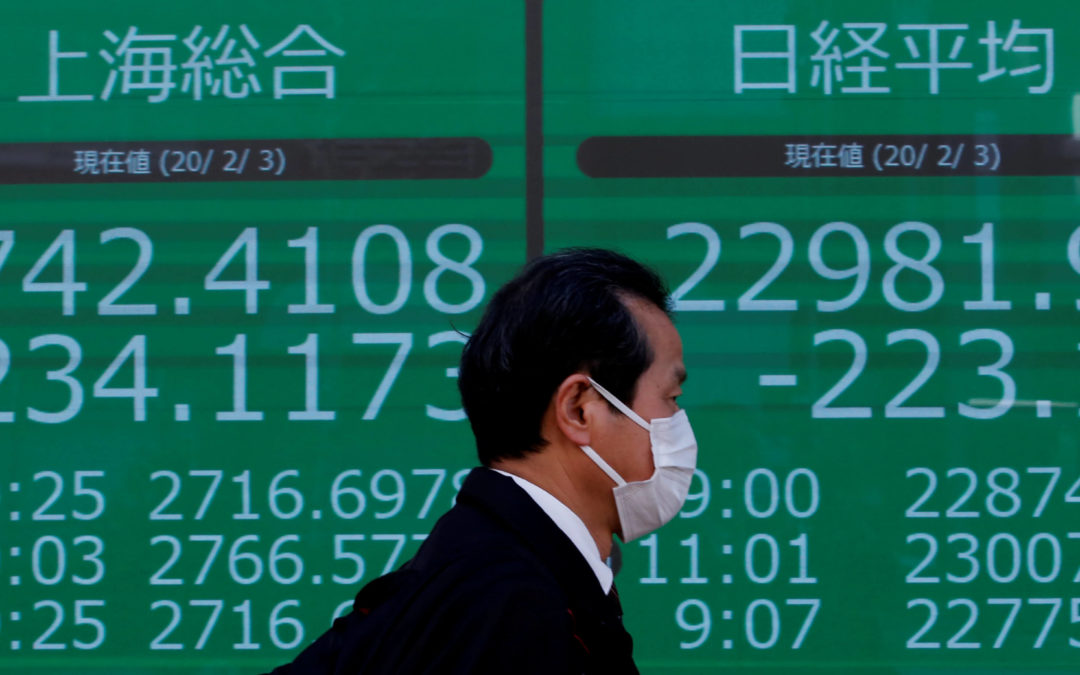Market veteran Jim Sinclair coined the term “Management of Perspective Economics” more than a decade ago to describe the world we live in. Sinclair, whose work during the 2008 financial crisis was essential reading, understood that markets don’t trade on fundamentals.
They trade on a strange mix of momentum and sentiment. And both of those things can be manipulated heavily by market makers, politicians, central bankers and the rest to manage our perceptions of events as they unfold.
Over the past two decades with the rise of algorithmic trading, that management of perspective became more and more acute to the point that central bankers have come to dominate markets publicly rather than behind the scenes like in generations past.
While watching the panic this week it became obvious to me that we’ve reached that singular point of failure, that moment when something hits the airwaves which they really can’t control the perspective of.
While to date the novel coronavirus, named COVID-19, hasn’t killed more people than the flu does annually, the response to the disease in China indicated something far more dangerous. And, in the early days of this virus, markets were eerily complacent for institutions that are supposed to be forward-looking.
We saw blow-off peaks in stocks like Tesla Motors (NASDAQ: TSLA) that rivaled anything Bitcoin (BTC) has done in the past couple of years. The initial rush into stocks during the early stages of this story made a lot of sense.
It piggybacked well on the political dysfunction and negative interest rates driving capital out of Europe, which sent the German DAX to a new all-time high in the same uncommitted fashion as the Dow Jones Industrials and S&P 500 did here. But it did so by sending the euro slicing through support to flirt with a breakdown below $1.08.
But now the reality of how potentially disruptive this virus can be is hitting markets like a ton of bricks. It may be overdone, but markets that are this leveraged — that are this stretched in valuation terms — become doubly vulnerable once the selling starts.
Complacency is a killer in investing. And the continued management of people’s perceptions feeds that complacency as traders become used to getting bailed out by central bank intervention.
Last week I noted how strongly gold and the dollar were trading in sympathy as the early signs of fear hit the markets. This week that trade intensified, but to the downside.
What a difference a week makes. Coming into today’s monthly close, gold dropped $75 in the first couple of hours of New York trading. If there was ever a moment where the combination of dollar illiquidity met management of perspective, it was this morning.
This is one of the biggest single morning drops in the price of gold since the 2013 massacre when gold dropped from these levels more than $200 over two days. Then it was an epic, back-breaking moment which confirmed the bear market had another few years to play out.
Today it’s a correction from a market that got too far ahead of itself. Gold cannot overcome larger market forces during times of panic.
In times of stress, gold is everyone’s plaything. The world is grossly short dollars and during a massive market correction where the demand for dollars rises, eventually traders will raid the gold piggy bank.
It’s not about fundamentals at that point, it’s about survival.
Not even the outbreak of near all-out war between Russia and Turkey and the potential for NATO to get involved helped gold’s case this morning. I’m sure there are many people in those parts of the world thanking their gods for the gift of gold being on sale today, but they’re not having any effect on the futures market in Chicago.
And after four full days of heart-stopping selling, gold was bound to come back to earth.
All week I’ve talked with people who kept expecting the selling to stop after one or two days. They’d come to expect that the markets would react the same way they’d reacted over the past few years. Selling would be met with a short, sharp correction as the central banks came in, controlled the rise of the VIX and send the markets higher.
But that hasn’t happened. And the question now is why?
Yesterday, ECB President Christine Lagarde gave the markets no love in her statements about the current situation, saying the ECB would not be making any emergency moves to improve liquidity. In fact, she stayed on message, talking about climate risks to bank balance sheets.
And this panic plays directly into Lagarde’s hands as she wouldn’t mind a little crisis in stocks to get Germany to approve the new ECB budget — which failed spectacularly this week — that loosens the purse strings and allows for huge stimulus spending in Europe while giving the ECB a more central role.
Removing some complacency from the markets is something people like Lagarde and FOMC Chair Jerome Powell have been trying to effect for a while now. Powell dragged his feet on lowering rates last year, holding onto the narrative that the U.S. economy was still strong enough to decouple from a slowing world.
It’s almost as if the central banks are trying to tell us that we might have to get along without their help at some point soon. Because maybe, just maybe, the situation they’ve managed to push us into is bigger than they can handle.
And that, in my mind, is the real threat to the markets going forward.
• Money & Markets contributor Tom Luongo is the publisher of the Gold Goats ‘n Guns Newsletter. His work also is published at Strategic Culture Foundation, LewRockwell.com, Zerohedge and Russia Insider. A Libertarian adherent to Austrian economics, he applies those lessons to geopolitics, gold and central bank policy.




